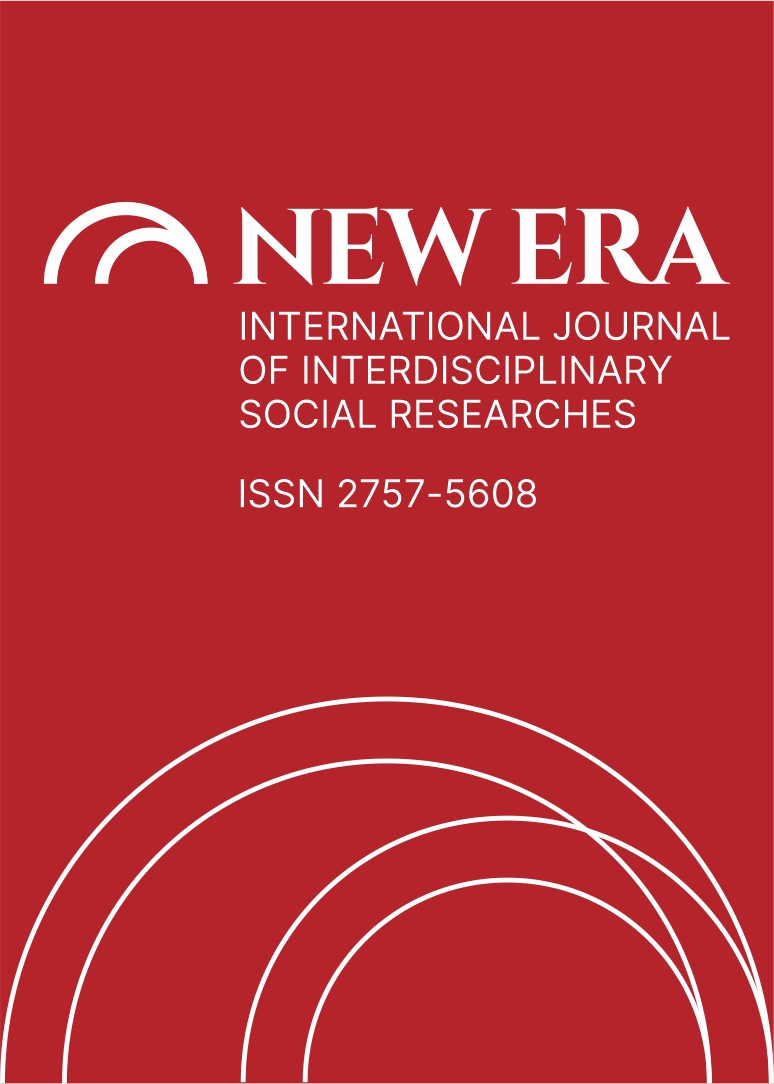ENVIRONMENTAL COMPATIBLE DESIGN AND OPEN RECREATIONAL SPACES IN HISTORICAL CITIES: SAFRANBOLU HAN BACK PARK
DOI:
https://doi.org/10.5281/zenodo.8186327Abstract
In recent years, people's understanding of vacation and rest has changed. In their free time, people go to places with cultural attractions to meet their cultural needs, see different places, gain new knowledge and experience. In this context, there are cities with thousands of years of architectural culture, tradition and accumulation in our country. The conservation of historical urban areas requires the preservation of not only cultural and historical values, but also economic and social qualities. For this reason, the areas to be protected should be considered together with the current urban dynamics. In this study, the back of the Han, which is located within the urban site boundaries of the Safranbolu city Çarşı neighborhood and is currently empty and cannot be used, was chosen as the study area. In the city, which attracts many tourists with its historical and cultural features, the number of open spaces where visitors and the public can rest is few. With the study, it was aimed to gain a public open space in the city center. In this context, landscape Project scenarios was designed as a park for the study area. In the study, natural and cultural environmental analyzes of the area were made and the steps of the design process were operated. As a result of the study, different design alternatives proposed for the area were presented. Computer software such as AutoCad 2018, Photoshop CS6 and Lumion were used in the preparation of the projects. It is thought that the results of the study will give an idea to the city managers and will be an example for similar areas.
Keywords: Historical city, Landscape Design, Open Space, Cultural Tourism, Safranbolu.
References
Alaeddinoğlu, F. 2006. Van İli’nin Turizm Potansiyelinin Belirlenmesi ve Planlamaya Yönelik Öneriler. Ankara Üniversitesi, Sosyal Bilimler Enstitüsü, Doktora Tezi, Ankara.
Aydın, Ş. 1997. Kongre Turizmi ve Türkiye’nin Kongre Turizmi Potansiyeli, Yüksek Lisans Tezi, Çanakkale Onsekiz Mart Üniversitesi, Sosyal Bilimler Enstitüsü, 160 sy. Çanakkale.
Aymankuy, Y. 1997. Türkiye’de Geliştirilebilir Turizm Şekli Olarak Kongre Turizmi ve İzmir İl Merkezi Örnek Uygulaması, Doktora Tez, Balıkesir Üniversitesi, Sosyal Bilimler Enstitüsü, 356 sy. Balıkesir.
Bayındırlık ve İskan Bakanlığı, 2007. Kentleşme Alanında Sürdürülebilirlik Çözümlemesi: Yaklaşımlar, Modeller, Temel Alanlar, Göstergeler, Uygulama Örnekleri. Kentleşme Tematik Grubu 2. Raporu. Ankara: Sürdürülebilir Kalkınmanın Sektörel Politikalara Entegrasyonu Projesi, 48 s.
Beyhan Ş.G., Ünügür, S.M., 2005. Çağdaş Gereksinimler Bağlamında Sürdürülebilir Turizm ve Kimlik, İTÜ Dergisi A, cilt:4 s:2 sy: 79-87.
Birsel, İ., 1992. Ulusal Tanıtımın Kültürel Boyutu, 1. Tanıma Şurası, Ankara.
Görer N., Gültekin N., Gültekin T. 1993. Kent Kimliği Koruma Planları Kentsel Tasarım Post Modernizim Üzerine, II. Kentsel Tasarım ve Uygulamalar Sempozyumu, 194-197.
İlhan, N. 2003. Tarihi Çevre Değerlendirme Ders Notları, Yıldız Teknik Üniversitesi, Mimarlık Fakültesi, Rölöve Restorasyon Yüksek Lisans Programı.
Lichfield, N. 1988. Economics in Urban Conservation, 361 sy. Cambridge University Press, England.
Meşhur, M.Ç. 1999. Tarihi Çevrelerin Korunması Sürecinde Yeni Yaklaşımlar, Amasya Kenti Örneği, Selçuk Üniversitesi, Fen Bilimleri Enstitüsü, 244 sy. Konya.
Okyay, İ. 1990. Safranbolu Koruma İmar Planı Yönetmelik Rapor.
Özkan, N.E. 2005. Koruma ve Kültür Turizmi Bağlamında İstanbul Tarihi Yarımada’da Bizans Dönemi Mimari Mirasının Değerlendirilmesi, Yıldız Teknik Üniversitesi, Fen Bilimleri Enstitüsü, Yüksek Lisans Tezi, 220 sy. İstanbul.
Pearce L.P., Lee P. 2005. Developing the Travel Coreer Approach to Tourism Motivation, Journal of the Travel Research, Vol:43, sy:226-237.
Street, P. 1997. Scenario Workshops: A Participatory Approach to Sustainable Urban Living? Futures. Cilt. 29. Sayı. 2. syf 139-158.
Tunçer, M. 2009. Kentsel Tasarımın Tarihsel Çevre Korunmasında Etkin Olarak Kullanımı: Böl ve Yönet Modeli. https://blog.milliyet.com.tr/--kentsel-tasarimin-tarihsel-cevre-korunmasinda-etkin-olarak-kullanimi--bol-ve-yonet-modeli/Blog/?BlogNo=168780
URL-1. 2022 https://earth.google.com/web/search/Safranbolu
URL-2. 2022. https://www.altınsafran.com.tr
URL-3. 2022. https://tr.weatherspark.com/y/97369/Safranbolu
URL-4, 2022. http://www.safranbolu.gov.tr/
Wheeler, S. 2004. Planning for Sustainability: Toward Livable, Equitable, and Ecological Communities. Londra ve New York: Routledge.
Downloads
Published
How to Cite
Issue
Section
License
Copyright (c) 2023 NEW ERA INTERNATIONAL JOURNAL OF INTERDISCIPLINARY SOCIAL RESEARCHES

This work is licensed under a Creative Commons Attribution-NonCommercial 4.0 International License.


